SELFISH CALIFORNIA
 Sometimes it rains in Israel; usually it doesn't.
Sometimes it rains in Israel; usually it doesn't.
For that reason, Israel makes 97% of the water it uses for drinking, irrigation and everything else.
Perhaps "makes" is too strong a word. Making water is generally thought to be God's job. Our job is to see that the water is usable by whatever creature or plant that wants to use it.
Israel does that in spades. They are the world's leading water desalinators; doing what God would have done if He only had the money.
Arizona has a serious water problem. They would like to solve it as quickly as possible. California does not appear to be in a mood to help, not having learned to share in Kindergarten.
The Israeli firm IDE Technologies believes it has the solution to Arizona's water problem.
IDE Technologies is Israel's leading sea water desalinizer. They built a massive desal plant in Carlsbad, California that provides 10% of San Diego's drinking water and will provide more.
IDE looks on Arizona as a growth market for its product, fresh water.
But where is Arizona going to get sea water to desalinate?
That would be The Sea of Cortez, or more specifically, Puerto Penasco,"Arizona's Beach." Puerto Penasco or "Rocky Point" to the avaricious Gringos, is a bustling town of around 63,000 folks engaged in a booming tourist economy and a declining fishing economy (The usual reasons.)
Like most middling sized towns, they would like to add another string to their bow. IDE said their desal project would cost around, oh, 5.5 Billion; a lot of it sticking in Puerto Penasco. The Puerto Penascans liked that just fine.
Not so the Governor of the State of Sonora. "What's the rest of Sonora getting out of this?" he asked, grumpily. (No Mexican politician can last if he is perceived as being a tool of the Gringo.)
IDE thinks of everything; a multinational, they are used to dealing with the objections of the local yokels.
The governor was informed that IDE had plans to build a water pipeline to Hermisillo, the capital of Sonora; ending its water problems forever. Could the Governor approve that? Good! Because IDE planned a similar pipeline to Nogales, Sonora. Any further questions?
We are not sure what plans the IDE has for the governor of Arizona.
That left the National Park Service and the environmental groups to complain.
The NPS had heard that the pipeline was to run straight through Organ Pipe Cactus National Monument and then be pumped to the highest peak in the Monument for gravity flow to the Phoenix Area.
Not so! said IDE. They understood the concern of the NPS and would place four powerful pumps on the Mexican side of the border and away from the Monument. The pumps would be environmentally friendly, solar and battery powered, and would push the water to Phoenix.
Finally, there was that old party pooper, The Sierra Club.
The Sierra Club pointed out (correctly) that desalinization produces huge amounts of poisonous brine and that the upper Sea of Cortez was home to two very endangered creatures; namely the Vaquita Porpoise (Only ten left in the world!) and the Totoaba, largest species of the drum family. The Totoaba has a swim bladder that the Chinese believe can cure erectile dysfunction. There are a lot of Chinese. The Swim bladders sell for $46,000 a kilo and are known as "Cocaine of the Sea."
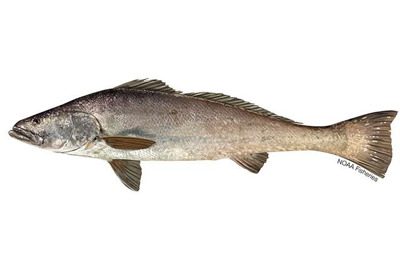 Naturally this has attracted the attention of certain crime cartels which protect the illegal gill netters who prey on the Totoaba. (The Vaquita Porpoises get tangled in the gill nets and drown.) Fortunately, the Totoaba are rather chummy fish and lend themselves to fish farming, aside from being quite tasty. IDE could offer the gill netters jobs in the fish farm. (Nobody said Conservation Biology was simple!)
Naturally this has attracted the attention of certain crime cartels which protect the illegal gill netters who prey on the Totoaba. (The Vaquita Porpoises get tangled in the gill nets and drown.) Fortunately, the Totoaba are rather chummy fish and lend themselves to fish farming, aside from being quite tasty. IDE could offer the gill netters jobs in the fish farm. (Nobody said Conservation Biology was simple!)
The IDE guy admitted that they had planned to "put the brine back in the ocean" but given the sensitive nature of the endangered species, they would be open to storing the brine on land till it dried out and could be sold. (A salt pyramid would also make a great tourist attraction!)
The Sierra Club objected that the project would use an inordinate amount of energy. The IDE pointed out that it would be renewable energy (solar and battery) produced entirely by the IDE.
Finally, the Sierra Club objected on general principles: In the Southwest, water leads to growth and growth, as we learned from Edward Abbey, "Is the motto of the cancer cell."
Now the Sierra Club prefers that you ride a bicycle rather than an automobile and purchase second hand clothing from your thrift store, but that does not mean you will do so.
It is unlikely that the average Arizonan will be as altruistic as the Sierra Club. It may be game, set and match for the IDE.
On the other hand, one cannot underestimate the paranoia of the right wing.
If the IDE Project goes through, it will mean that a significant portion of Arizona's drinking water will be in foreign hands. About one billion cubic meters or a million acre feet, to be exact.
Is that worth worrying about?
Probably not. It would not be in Mexico's fiscal interest to cut off Arizona's drinking water as long as the cash is flowing south.
Indeed, that situation already exists. The water that irrigates the Rio Grande Valley and waters Brownsville, is not actually Rio Grande water, it is really Rio Concho water. The mighty Rio Concho rises in Mexico's Sierra Madre, flows across much of Northern Mexico and enters a depleted Rio Grande at Ojinanga. Both nations seem to manage the situation quite well.
SYMBOLS: WHAT'S IN A NAME
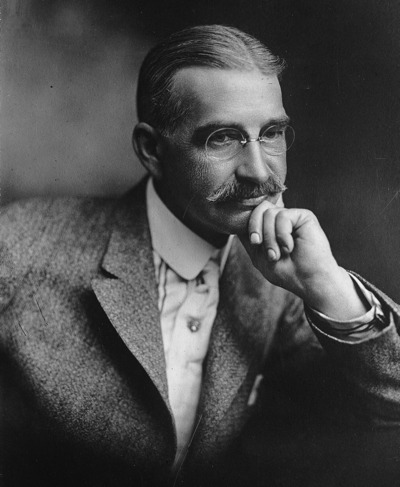 My home state of South Dakota is known to be quite perverse in its opinions.
My home state of South Dakota is known to be quite perverse in its opinions.
Take for example the reaction to the infamous Wounded Knee Massacre in which nearly 300 Native Americans were ruthlessly slaughtered by the U.S. Army, an act denounced by even their commander, General Nelson Miles.
Not so, L. Frank Baum, editor of a local weekly newspaper, THE SATURDAY PIONEER of Aberdeen, South Dakota. Mr. Baum apparently wanted every Indian dead.
In an editorial of December 20, 1890, he has this to say about the recently killed Sitting Bull:
"Sitting Bull, most renowned Sioux of modern history, is dead. He was not a chief, but without kingly lineage he rose from a lowly position to the greatest medicine man of his time by virtue of his shrewdness and daring.He was an Indian with a Whiteman's spirit of hatred and revenge for those who had wronged him and his.
In his day, he saw his son and his tribe driven from their possessions, forced to give up their old hunting grounds and espouse the hard working and uncongenial avocation of the Whites. And these, his conquerors, were marked in their dealings with his people by selfishness, falsehood and treachery.
What wonder that his wild nature, untamed by years of subjection, should still revolt.
What wonder that a fiery rage still burned within his breast, and that he should seek every opportunity of obtaining vengeance on his natural enemies.
The proud spirit of the original owners of these vast prairies, inherited through centuries of fierce and bloody war for their possession lingered last in the bosom of Sitting Bull.
With his fall, the nobility of the Redskin is extinguished and what few are left are a pack of whining curs who lick the hand the smites them.
The Whites, by law of conquest, by justice of civilization, are masters of the American continent, and the best safety of the frontier settlements will be secured by the total annihilation of the few remaining Indians.
Why not Annihilation? Their glory has fled, their spirit broken, their manhood effaced. Better that they die than live like the miserable wretches that they are.
History would forget these latter day despicable beings, and speak in later ages of the glory of these grand kings of forest and plain that Cooper loved to heroize.
We cannot honestly regret their extermination, but we at least do justice to the manly characteristics, possessed according to their lights and education by the early Redskins of America."
SATURDAY PIONEER December 20, 1890
WOUNDED KNEE
"The peculiar policy of the government in employing so weak and vacillating a person as General Miles to look after the uneasy Indians, has resulted in terrible loss of blood to our soldiers and a battle which at best is a disgrace to the War Department. There has been plenty of time for prompt and decisive measures, the employment of which would have prevented this disaster.
THE PIONEER has before declared that our only safety depends upon the total extermination of the Indians. Having wronged them for centuries, we had better to protect our civilization, follow it up with one more wrong and wipe these untamed and untamable creatures from the face of the earth. In this lies future safety for our settlers and the soldiers who are under incompetent command.
Otherwise, we may expect future years to be as full of trouble with the Redskins as those have been in the past.
An Eastern contemporary with a grain of wisdom in his wit, says that "When the Whites win a fight, it is a victory, and when the Indians win, it is a massacre."
SATURDAY PIONEER January 3, 1891
Now neighbors, you say you have never heard of this crazy bigot, L. Frank Baum.
Of course, you have!
He is the chap that wrote the WIZARD OF OZ! That wonderful story that you read to your children and grandchildren. The same writer that sent Judy Garland tripping down the Yellow Brick Road after telling Toto they weren't in Kansas anymore.
How could anyone write a children's classic and still be a racist monster?
Well, I don't know. People are complicated. Perhaps he was being satirical? After all, no one has accused the 18th century satirist Jonathan Swift, of seriously wanting to sell Irish babies as a food source in his "A MODEST PROPOSAL."
Then again, Baum might have been simply mean spirited. Authoring children's books is no guarantee against meanness: The beloved modern day children's writer, Roald Dahl (James and the Giant Peach), was also a notorious anti-semite.
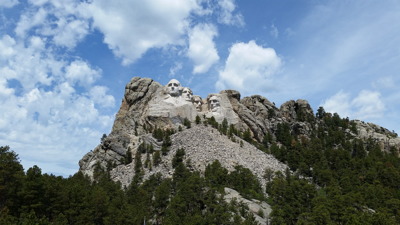 How bigoted are South Dakotans? About average for the Midwest. The state went for Trump in the last election.
How bigoted are South Dakotans? About average for the Midwest. The state went for Trump in the last election.
I recall that if you go to Belle Fourche, South Dakota on the edge of the Black Hills you can't help but notice one of the foot hills. It seems that a group of racial enthusiasts carved the letters "KKK" into the mountain by removing the sod to make a statement a quarter mile tall. This was done in the 1920's; the height of Klan activity.
The weeds that replaced the grass sod were of a different color and thus the local opinion remains embarrassingly expressed to this day.
That was then, this is now.
Do White South Dakotans still harbor prejudice against their Red brethren?
Maybe. Hard to tell. Asking people if they're still prejudiced is a bit like asking them if they've stopped beating their wife.
Perhaps we should look for symbols.
Back around the 1890's, the American South went monument crazy. Every Southern courthouse had to have a statue of a redoubtable Confederate infantryman standing on the front lawn. "Traveler," carrying Robert E. Lee, cantered into the sunset in Southern towns large and small.
For towns that could not afford a statue, it was easy to name a road, street, bridge, school or other useful creation after a Southern hero. Even Edmund G. Pettus, who was arguably the worst general in the Confederate ranks, was sanctified with the Edmund G. Pettus Bridge in Selma, Alabama.
But then the 21st century came along with all its uncertainties: Maybe all these bronze relics ARE a bit unsettling to our Black citizens. Maybe they're seen as symbols of something evil.
And so, symbolic or not, one by one, the statues began to fall, and with them the street and buildings began to change names. Tillman Hall at Clemson University, named for "Pitchfork Ben" Tillman, South Carolina's leading racist, became "Founder's Hall".
So maybe symbols do matter.
Perhaps we should take a look at South Dakota: An ordinary AAA road map will do.
Ah! There it is, snuggled up against Wind Cave National Park, Custer State Park!
At 71,000 acres, it is one the largest of the nation's state parks. Founded and named in 1919, no one at that time could guess that the namesake of Custer State Park would prove to be controversial.
Could one tolerate an enormous state park named after a perpetrator of the Washita Massacre?
South Dakota can.
At least until recently.
A mischievous South Dakota State Senator, Troy Heinert, who is also a Native American, brought Senate Bill 178 to the floor. The bill would have removed the name "Custer" from the state park by July 1, 2023 and the South Dakota Board of Geographical Names would have approved a new name by July 1, 2027.
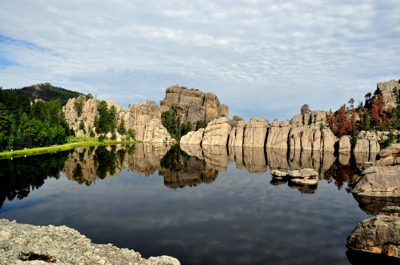 Alas and alack! Democrats are as rare as Native Americans in the South Dakota State Legislature.
Alas and alack! Democrats are as rare as Native Americans in the South Dakota State Legislature.
Senator Heinert's bill was defeated in committee by a vote of 8-1.
The opposition was led by Senator Julie Frye-Mueller who claimed Heinert was trying to rewrite history. "We can't keep changing names to erase what we don't like" she said.
Senator Heinert dismissed the idea that he was trying to rewrite history.
"It's not like we change the name, and the Buffalo are going to come back." He said, sarcastically.
"There's a significant portion of our population in South Dakota that would say that George Armstong Custer changed our lives forever when he illegally went into the Black Hills and said that gold was coming up with the roots of grass."
So, changing the name of Custer State Park is probably a forlorn hope in the immediate future even if the House and Senate voted in favor of a name change, Governor Kristi Noem would most certainly veto it, If nothing else than to please her great and good friend, Donald J. Trump who, as you recall is running for President.
Mr. Trump and Kristi will share the dais at Mount Rushmore National Memorial this Fourth of July where the Governor and Trump will put on a stem winder of a fireworks display, much to the displeasure of the National Park Service and the U.S. Forest Service, who fear a forest fire.
Trump and the Governor can be excused a moment of gloating in which they will point out how the patriotic Republicans saved yet another American hero (that would be Custer) from ridicule and obscurity at the hands of the perfidious Democrats.
All this will be performed before a roaring, "Red Meat' crowd of True Believers. (Did we mention that Kristi has dark horse Presidential ambitions of her own in future events?)
Since the name "Custer" will not be easily retired (There is also a county and town by that name in South Dakota.) is there any point in pursuing Senator Heinert's efforts at renaming the park?
Well, it might be worthwhile to keep the liberal flag waving; seeing what sort of name replacement we could come up with.
There are, of course, plenty of Indian names to choose from: Red Cloud, Crazy Horse, Gall, Sitting Bull, Rain-In-The-Face; all with heroic resumes.
However, the Native Americans tended not to name places after people.
It is not necessary to use a human name; the name "Singing Elk State Park" has been suggested; modeled after elk 'bugling' in the Fall.
It is not even necessary to exclude White people: The names of Peter Norbeck and Joe Foss come to mind.
Norbeck was twice governor of South Dakota and three times a senator. He was an early environmentalist and New Dealer and did much to improve Custer State Park. (Except of course, to change the name.)
Joe Foss won the Congressional Medal of Honor for shooting down 26 Japanese planes and served two terms as governor. (One wag suggested that the Democrats run the Japanese pilot that shot Foss down.)
Ah well! The mega-statue of Chief Crazy Horse is coming along, slow but sure, just outside the town of Custer. Perhaps it will suffice.
THE DOCTOR'S PIT
Your editor finds it an interesting connection. If you visit Martinez, California, you will have a double header. In the Alhambra Cemetery of Martinez you will find the grave of Joseph Reddeford Walker, famous mountain man, explorer, and allegedly the first Whiteman to see Yosemite Valley.
Walker's claim on the Yosemite Valley has been challenged if not been debunked, but his tombstone says he camped in Yosemite in November, 1833.
Drive up the Alhambra Valley to John Muir National Historic Site and the friendly ranger will direct you to John Muir's grave.
John Muir lies beside his beloved wife "Louie" under simple matching granite tombstones giving birth dates and death dates, with a nod to Muir's Scottish ancestry; a carved Scotch thistle.
My next mortuary mission would be the mysterious last resting place of the great Scottish naturalist, David Douglas.
Why David Douglas? No reason except that he was handy. The Big island of Hawaii was the end of the line for David Douglas and my wife and I were enroute to that island to avoid the Maryland winter; it was a natural mix.
I would visit The Doctor's Pit where the adventurous life of David Douglas came to a violent end. The Doctor's Pit is located on one of the more remote slopes of Mauna Kea, where 4 wheel drive would be helpful.
Now rural Hawaii is an interesting place. If you want something done or accomplished, you go to a party. Almost invariably there will be someone at the party who can help you achieve your goal, be it painting your house, reshingling your roof-or getting you to the Doctor's Pit.
And that's how I met Rob O'Donahue. He was (is?) a ranger working for the Hawaii Division of Natural Resources. The very next week, he would be going up on Mauna Kea to service some composting toilets and could use the company. A side trip to the Doctor's Pit could be made. Would I like to come along? Of course!
So, next week my wife dropped me off at the Hilo Divisional Office of Hawaii Department of Natural Resources at the ungodly early hour requested by Rob.
"This being a government mission there will be some paper work to fill out!" said Rob cheerily.
"You are about to become a volunteer employee of the Hawaii Department of Natural Resources; With all the rights, duties, and emoluments that come with the position, of which there are none. However, by signing this stray piece of paper, you will be entitled to Workman's Compensation in the unlikely, but still plausible possibility that you are injured in line of duty.
"Sign and date here, please!"
Rob's last name provided a clue: He was Boston Irish, which meant there would not be a dull moment on our foray into darkest Hawaii; the Boston Irish have a natural sense of humor that will brighten your day and lighten your burden.
Myself, I'm South Dakota Irish, which is a quieter breed of cat, being influenced by our Scandinavian neighbors. (The South Dakota Irish are allowed to tell "Ole and Olga" jokes, but only after multiple assurances that you meant no harm.)
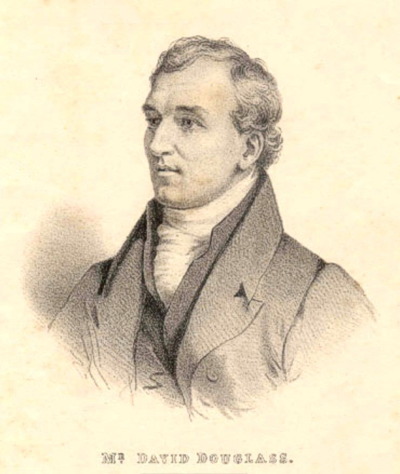 Rob alternated Hawaiian jokes with Boston Irish jokes so no charge of racism would stick. Hawaii is made up of a plethora of primarily Asian racial types; with Chinese, Japanese, Korean, Filipino, but with Native Hawaiian and even Mexican and Portuguese. Oddly enough, the Portuguese were the punch line of many of the jokes; being regarded as the dumbest of the Hawaiian ethic groups by the rest of the ethnic groups. We took a dependable looking Dodge pickup with 4 wheel drive capabilities from the motor pool and were on our way.
Rob alternated Hawaiian jokes with Boston Irish jokes so no charge of racism would stick. Hawaii is made up of a plethora of primarily Asian racial types; with Chinese, Japanese, Korean, Filipino, but with Native Hawaiian and even Mexican and Portuguese. Oddly enough, the Portuguese were the punch line of many of the jokes; being regarded as the dumbest of the Hawaiian ethic groups by the rest of the ethnic groups. We took a dependable looking Dodge pickup with 4 wheel drive capabilities from the motor pool and were on our way.
We took the Saddle Road out of Hilo. (Which is now the Daniel Inouye Highway memorializing the famed one armed Senator who won the Congressional Medal of Honor and 8 consecutive terms as Senator.)
After a bit, we turned off onto the Mauna Kea Access Road. (Which as the name implies, will get you all the way to the 13,800 foot summit of the mountain.)
But we weren't going that far. We turned off on the Mauna Road and promptly ran out of paved road.
Rob stopped to engage the 4 wheel drive hubs. "This is a good place to take a pee." He remarked conversationally. I demurred. Big mistake on my part.
I noticed that while the road was rough, we were continually being passed by ten ton Mack dump trucks.
I asked Rob where they were going so fast?
"Those are cinder trucks going up for a load of volcanic cinders. They get paid by the load." Replied Rob.
Since Hawaiian truck drivers tend to identify as Native Hawaiian, I was surprised.
"I thought the Hawaiian religion forbade any removal of rock from the islands, under pain of very bad luck."
"Ah! But this is where Creative Theology comes into play!" said Rob sagaciously. "You see, the cinders are not actually being removed, they're just being reshuffled in various construction projects throughout the islands. Madame Pele understands!"
That logic reminded me of a trip I had taken through the Amish Country of Pennsylvania. I noticed one Amish farmer (Or at least a chap dressed up like an Amish farmer.) busily spraying his crop-with a gasoline powered sprayer! How could this be!
Little did I know that I was watching Creative Theology in action. I inquired of an expert on Amish ways regarding the gasoline powered sprayer. "Ah" said my expert "and how was the sprayer propelled?" I said it was horse drawn. "There you have it! As long as a piece of farm equipment is pulled by a horse, it's alright with the Lord."
Rob laughed appreciatively "You never can tell with people." Rob too was interested in 19th century naturalists; that was the century where all the big stuff, plant and animal was getting named. If you were a naturalist and played your cards right, you could achieve immortality by having a new species named after modest you.
What did David Douglas do?
A lot. He introduced 240 species new to science to Great Britain; a result of three plant hunting expeditions he was sent upon by Sir Joseph Hooker, head of the Royal Horticultural Society..
He traveled the almost mythical York Express route back to England and an appreciative Professor Hooker. A Sitka Spruce he brought back and planted, is now the tallest tree in England.
A number of things were named after him by scientific admirers, including a tree and a squirrel.
Douglas met his end in a strange manner. He was killed in either a tragic accident Šor he was murdered in the Doctor's Pit.
The Doctor's Pit was the last place Douglas was reported alive, so it was where I needed to go.
David Douglas acquired the nickname "The Doctor" as he was very good at providing medical services in a frontier setting, such as setting broken bones. The Pit was a hole camouflaged with branches and baited with water, used to lure wild cattle to their doom.
Douglas either fell-or was pushed, into such a pit that was already occupied by a wild bull, and was trampled and gored to death. Hence the name "The Doctor's Pit". If you believe the murder story, The alleged pushing was done by one Edward "Ned" Gurney, an escapee from the dread Botany Bay penal colony in Australia.
Ned was supporting himself by running a small Bed & Breakfast on the road to Hilo and trapping wild cattle on the side. Douglas was a guest of Ned's. Ned was the last person to see David Douglas alive.
What would be the motive, if any?
Robbery would do: Douglas was carrying his salary and expense money in the form of gold sovereigns secured in a purse. Perhaps Gurney saw the glint of many sovereigns when Douglas paid his bill, reverted to type, and formulated a plan.
But you can't convict a man on a "Perhaps" and Gurney was never arrested, let alone tried. He later participated in the California Gold Rush and died in California.
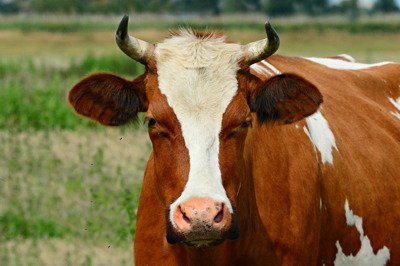 The consensus among modern historians (But not all!) is that David Douglas died an accidental death at the horns and hooves of wild cattle.
The consensus among modern historians (But not all!) is that David Douglas died an accidental death at the horns and hooves of wild cattle.
Are feral cattle still a problem on the Big Island? Depends on your goals. The Hawaiian wild cattle have morphed into a Big Game animal only just below the Grizzly Bear in size and ferocity. The famed Parker Ranch will let you hunt one on their property--If you give them $2500 fee money.
Due to the possibility that the Feral cattle will be hunting you, once they figure out what you are up to, Parker Ranch requires that you be backed up by an armed Parker Ranch Paneolo (cowboy) less things get out of hand.
Where did the cattle come from?
The cattle came from the idea that Hawaii could be improved upon. This is a remarkably bullshit idea. Just about anything will grow in Hawaii and that is the problem. Virtually any plant or animal "introduced" to Hawaii will shortly become "invasive".
That is exactly what happened at the end of the 18th century when Captain George Vancouver of the Royal Navy decided to introduce California cattle into Hawaii to provide meat for the Hawaiian people. Between 1794 and 1794 Vancouver managed to land a total of 8 cows and 4 bulls, on the Big Island, a gift to his friend King Kamehameha The Great.
David Douglas had this ironic statement about his future nemesis; "The grassy flanks of the Mountain (Mauna Kea) abound with wild cattle, the offspring of the stock left here by Captain Vancouver and which now prove a very great benefit in this island."
Not according to Rob's employer, the Hawaii Department of Natural Resources: You see, the goal of The DNR is to reforest the Big Island with Hawaii's native tree, the majestic Koa.
The Koa grows to a height of 115 feet and was used for just about everything by the native Hawaiians, from giant war and exploration canoes to salad bowls; the wood was durable but easily worked.
The only problem with Koa is that it is like catnip to the wild cattle. They love it! Nothing is more yummy to feral cattle than succulent Koa shoots. You can have Koa or you can have feral cattle.
Part of Ranger Rob's job was shooting the wild cattle. Something he did not particularly like to do. Like many of his generation, he was a vegetarian and something of an interspecies pacifist. He was a graduate in Forestry from the University of Massachusetts, an institution that leaned more to the John Muir viewpoint than the Gifford Pinchot outlook of the Western Forestry schools.
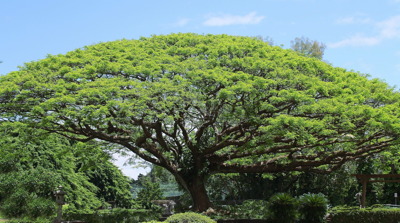 As we jounced along in four wheel drive toward the Doctor's Pit, I asked if he had any close calls
in his efforts to make the world safe for Koa.
As we jounced along in four wheel drive toward the Doctor's Pit, I asked if he had any close calls
in his efforts to make the world safe for Koa.
Rob mused for a moment and said "Well, yes. There was the time I was tracking a bullock outside of a Gorse patch. (Gorse is a nasty European "Ornamental" [Yellow flowers] with inch long thorns.) "I had hit him once and he was making for the Gorse and......"
"JESUS H. CHRIST! WHAT IS IT!" Rob exclaimed as he dynamited the brakes, throwing me heavily against the seat belts and the truck into a 180 degree spin.1
"Damned if I know" I said; not adding much to the discussion.
The "IT' in question was incredible. I had never seen anything like it. It was a perfectly rectangular blob, maybe 20 by 40, and black as the Devil's soul. It completely blocked the road and gently pulsated.
The whole scene reminded me of those cheesy 1960's Sci/fi movies where the Sheriff bangs on the flying saucer door with his pistol and the aliens zap him with alien spit.
What 'IT" was, became apparent when the trade winds picked up and dissipated the smoke.
What had happened was "The subject's vehicle failed to negotiate a curve due to excessive speed" as thousands of police reports would have tritely put it.
The "vehicle" in question would be one of the ten ton diesel Mack trucks that had been passing us. It would have rolled at least once, accounting for the thick cloud of black smoke as diesels don't function well upside down.
Rob and I conferred on what would happen next.
The script was actually quite simple: Rob had the radio and radio codes and would summon in a helicopter. I would provide first aid in the remote possibility that the anyone had survived the roll over.
I reached under the seat for the First Aid Kit. There was none.
I looked questioningly at Rob.
He shrugged, and explained that we were the victims of efficiency and unlikeliness. It seems that all the first aid kits had been removed from the trucks yesterday and taken to a central location and their contents updated and replaced, ah, tomorrow. (It being regarded that it was statistically unlikely that we would have a first aid incident, ah, today?)
Ah, well!
I took off my shirt and handed it to Rob who would need it to flag in the helicopter.
I then started out on what you have all done, and done much better than I: The First Responder's Walk.
In the First Responder's Walk, you do not know the condition of the victims: Live or dead or shockingly so. At the end of the First Responder's Walk, you will find out.
I reached the edge of the ravine and looked down.
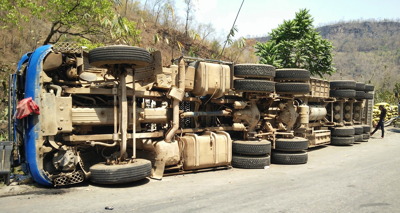 The truck was on its side and, from damage appeared to have rolled at least once.
The truck was on its side and, from damage appeared to have rolled at least once.
The driver was alive and bleeding profusely from head injuries. He was seated on a large block of lava rock not far from the truck and looked understandably forlorn.
Introductions were worthwhile under the circumstances.
"HELLO THERE! My name is PJ; what's yours?" I asked in my best "You're going to be alright" tone of voice. Turns out his name was "Mario" which was about the unlikeliest name for a Native Hawaiian I have heard. Aside from that he fit the ethnic bill; over six foot, broad paddler's shoulders, well over 250 pounds.
Mario said that his back hurt and that he would like to lay down on the ground. I asked Mario if he could wiggle his toes. Mario wasn't sure. I told him that moving around wasn't a good idea, but that he could lean against my knee, which he did while I tore up my tee shirt for dressing and managed to stop the bleeding from the head wounds.
I assured Mario that a helicopter would be on the way and he was visibly relieved. (At the time, I did not know if the county had an operational helicopter, but there was no need to alarm Mario.)
Rob told me that the chopper was on the way and he had informed the crew of possible spinal injuries.
Rob provided the crew with our approximate position and then climbed a promontory to wig wag him in.
Mario and I spend the time in small talk while I tended to the head bandage. He had two daughters whom his wife claimed he spoiled. I assured him that he would be able to spoil them shortly.
Finally, after what seemed an eternity, I heard the blessed "Whomp! Whomp! Whomp!" of helicopter blades.
It was then that I remembered how badly I had to pee.
The crew took what seemed to be an extraordinary long time in landing and getting there as well as separating Mario and myself. At last they had him packaged and I made a break for a clump of trees.
The owner of the construction company thanked us profusely and Rob suggested we needed to get the hell out there lest we be detained as witnesses. I concurred and we shortly were on our way to the Doctor's Pit.
"Now where was I?" asked the unflappable Ranger Rob.
"You were stalking a wounded bull" I reminded him.
"Oh yeah, the very worst thing had happened! I had hit the bull, but he didn't go down and he made it to the Gorse thicket. He could hide in there forever. I would have to go in there and get him.
"The gorse thorns don't bother cattle but they sure bother me. I stopped every so often to listen for his breathing; didn't hear a thing. Then I heard a twig snap.
It was behind me!"
The bull had circled around on his belly behind Rob.
Rob heard a triumphant bellow before the bull was on him.
He snapped off two quick shots before he fell backwards, striking his head on a rock.
When he awoke, the dead Bull's head was between his ankles.
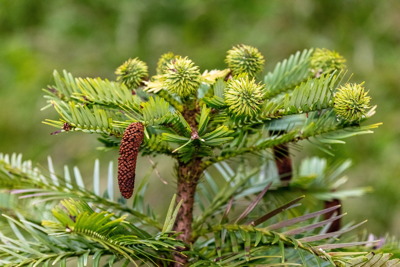 "I had to upgrade my rifle caliber' he said laconically.
"I had to upgrade my rifle caliber' he said laconically.
We reached the Doctor's Pit in late afternoon. Erosion had turned it into a gentle depression surrounded by a grove of Douglas Fir trees plant by his Scottish admirers.
At the bottom of the depression there was a rude stone cairn about ten feet tall with a brass plate attached:
'IN MEMORY OF DR. DAVID DOUGLAS KILLED NEAR THIS SPOT IN A WILD BULLOCK PIT, JULY 12 1834 AD
This tablet erected 1934 by the Hilo Burns Club"
I took the requisite photographs, paid my respects and we drove back to Hilo.
My wife met us at the Natural Resources building.
"Did you get what you wanted? Joan asked.
"More than enough" I replied.
____________________________
1The expletive "Jesus H. Christ" is often used by Christians to express fear, anger, or confusion. The meaning of the letter "H" is unknown. Google states that it stands for Christ's middle name "Harold."
THE SAFETY MESSAGE
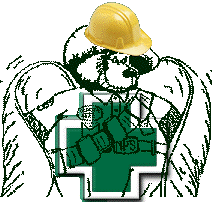 Yes, folks! You have finally gotten to the Safety Message, which normally means the end of THUNDERBEAR and you can press delete. BUT NOT BEFORE READING THE SAFETY MESSAGE!
Yes, folks! You have finally gotten to the Safety Message, which normally means the end of THUNDERBEAR and you can press delete. BUT NOT BEFORE READING THE SAFETY MESSAGE!
Today you will learn how to avoid the Drooling Ward at The Happy Camper Convalescent Home where you will be spending your final days.
That is, how to reduce the risk of dementia, which is a really great drag on your lifestyle, not to mention your family.
According to a study by JAMA Neurology, if you take at least 3800 steps per day pretty much forever, you will reduce your chances of developing dementia by a hefty 25%. The benefits increased if you stepped faster and peaked out at 9800 steps with no measurable gains beyond that number.
So, if you haven't done so already, ankle on down to your local REI or sports emporium and get one of those thingambobs that tells you how many steps you've taken and start making a hole in dementia!
The JAMA study did not indicate how many steps you had to take to remove the delusion that Trump won the election.
Happy Trails.
PJR